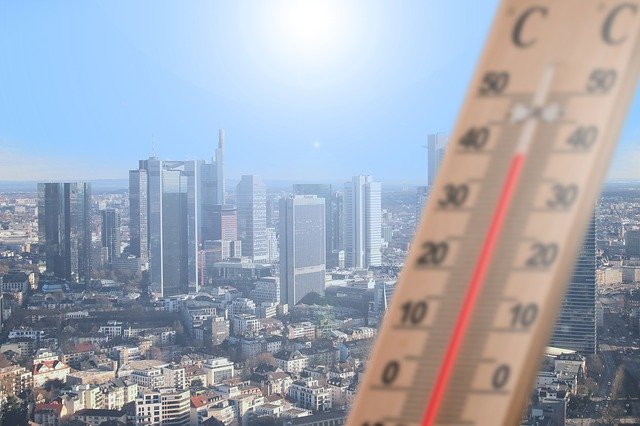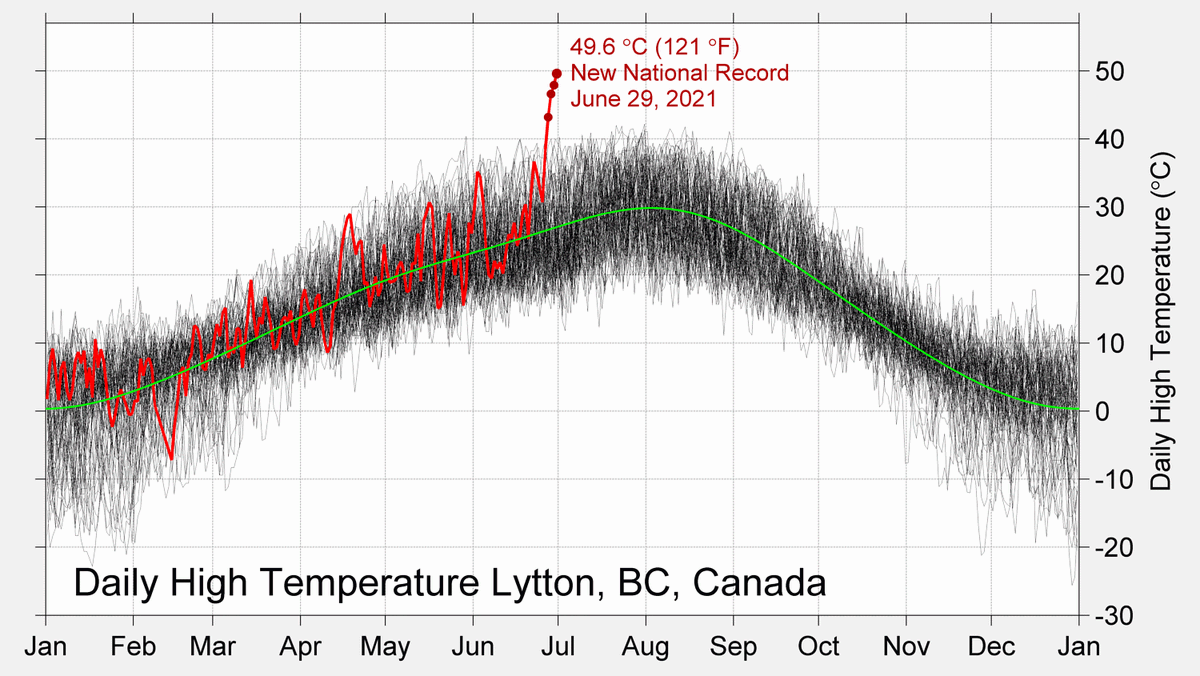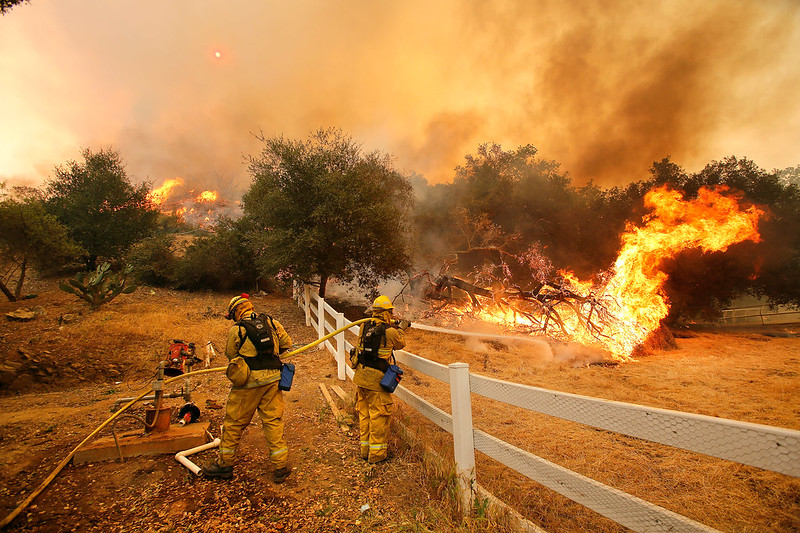 The Canadian village of Lytton typically sees average summer temperatures of 77°F.
The Canadian village of Lytton typically sees average summer temperatures of 77°F.
In mid-June, temperatures soared as high as 116°F to 122°F over three days and were responsible for a fire that devastated the town of 300 people.
Similar record-breaking temperatures across the U.S West and Canada have killed nearly 500 people. However, there seems to be no respite with a fourth "heat dome" in less than a month forming over the Rockies in the U.S and southern Canada this past weekend.
What Is A Heat Dome?
A heat dome is an envelope of hot air that settles over a region, like a lid on a pot.
 Let's understand what caused the heat dome to form in the first place.
Let's understand what caused the heat dome to form in the first place.
When waters in the western Pacific Ocean get warmer than the eastern Pacific, the air mass is heated differently. This creates wind patterns that move this hot mass of air over the western mainland U.S.
At the same time, the jet stream -- a band of air that circulates near the poles in a counterclockwise direction. These winds are created by the temperature difference between the cold Arctic and the warm temperate regions.
However, with climate change causing a warming of the Arctic, these jet streams are getting wavier. So, when this hot mass of air is trapped by a wavy jet stream, it gets locked in a region.
As this stagnant mass of air continues to get heated by sunlight, it dries out moisture in the soil. Usually, moisture in the soil and plants would cause water to evaporate, which cools the ground (just as sweating cools your body). However, with less moisture, the land heats up even more -- and this increases the intensity of the heatwave.
With droughts parching much of the landscape in the southwest U.S, scientists warn us that we will continue to see more frequent heatwaves.
The Impact
 The recent extreme heatwaves have spawned nearly 4000 wildfires in the U.S and Canada. The Bootleg Fire in Oregon has burned more than 300,000 acres and forced 2000 people to evacuate and is also creating its own weather patterns and lightning that spark more wildfires (read the science HERE).
The recent extreme heatwaves have spawned nearly 4000 wildfires in the U.S and Canada. The Bootleg Fire in Oregon has burned more than 300,000 acres and forced 2000 people to evacuate and is also creating its own weather patterns and lightning that spark more wildfires (read the science HERE).
Heatwaves cause fainting, exhaustion, and heat strokes in people as their bodies are unable to cool down fast enough. In addition, due to the risks of COVID-19, many cooling centers and public swimming pools have been closed, placing vulnerable people at risk. Most of the deaths have been among people 70 and older.
The fires and heatwaves are also responsible for widespread air pollution across much of the western U.S, with people reporting burning eyes and breathing problems.
The intense heat has led to the wilting of crops such as lettuce and wheat, as well as roasted cherries on trees. Mussels and other shelled animals have died on the Canadian coast, and according to Prof. Harley of British Columbia, more than a billion animals might have been lost to the heatwave.
These extreme heatwaves are a reminder that it is time for political leaders to heed the call from scientists that climate change is real.
Sources: NPR, NY Times, Washington Post, Wired







